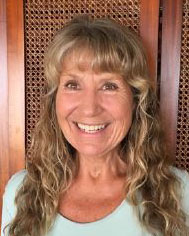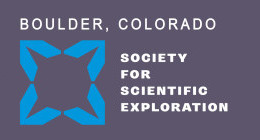Abstract
Neuroplasticity, the ability to have movement and reconstruction in the brain, has become a popular and important topic in the last decade. It’s clearly essential to have a flexible brain for development and advancement in consciousness rather than “getting stuck” in pathways that may have grown rigid with time and/or organic damage. Some of us have been researching and applying techniques to increase the brain’s plasticity for many more years and there have been thousands of studies showing the efficacy of such techniques. Brainwave based biofeedback, also known as “neurofeedback,” has emerged as a computer-assisted way to promote neuroplastic change.
The Low Energy Neurofeedback System (LENS) is a specific kind of neurofeedback that operates much more rapidly than traditional neurofeedback and has qualities that make it much easier to use with people who can’t pay attention or sit still. With this system, the client doesn’t need to “do” anything, and there is nothing to learn. While a single session of the more traditional operant conditioning neurofeedback might take 30-45 minutes, a typical treatment session with the LENS only lasts 3-4 minutes.
Utilizing an unaltered standard electroencephalogram (EEG) with software, we disrupt the client’s default brainwave patterns, providing an opportunity for reorganization and self-correction. This emergent reorganization allows for more flexible and adaptive functioning. The mechanism by which this happens appears to be one of information transfer, perhaps in a subtle realm, but the specifics have yet to be discerned. We do know that the brain wants to move to homeostasis choosing the best, strongest, and most efficient neuropathway available thus optimizing brain function.
The LENS is approved by the FDA for general relaxation and the reduction of stress, which is the root of most psychological disorders. Angela and Lisa, both clinical psychologists, have been utilizing neurofeedback to benefit their patients with a wide variety of issues. Some seek out this treatment for physiological relief such as those suffering from a traumatic head injury, a stroke, a particular learning disability or any other organic condition while others who are simply psychotherapy patients find great relief and a reorganization of issues they’ve been troubled with over a lifetime.
We will discuss some inconvenient questions about neurofeedback that are raised by its efficacy, and we will explore the electromagnetic field that the therapist (sometimes unknowingly) holds for the patient in their healing.
Bios
 Dr. Angela Gould is a clinical psychologist in practice for 42 years. Over the years, her skills have broadened into many areas including EMDR (Eye Movement Desensitization and Reprocessing), Brainspotting, LLLT (infra-red light and Low-Level Laser Therapy), LENS (Low Energy Neurofeedback System) and Biological Decoding. She’s spent time at the Jungian Institute in Zurich and has been a hospice volunteer for 20 years offering support to the bereaved. Currently her practice is in Boulder, CO where she offers psychotherapy and all of the above treatment modalities to a wide variety of clients.
Dr. Angela Gould is a clinical psychologist in practice for 42 years. Over the years, her skills have broadened into many areas including EMDR (Eye Movement Desensitization and Reprocessing), Brainspotting, LLLT (infra-red light and Low-Level Laser Therapy), LENS (Low Energy Neurofeedback System) and Biological Decoding. She’s spent time at the Jungian Institute in Zurich and has been a hospice volunteer for 20 years offering support to the bereaved. Currently her practice is in Boulder, CO where she offers psychotherapy and all of the above treatment modalities to a wide variety of clients.
 Dr. Lisa Merrifield provides clients an integrative approach augmenting psychotherapy with biofeedback, neuromodulation and functional imaging techniques. These include peripheral biofeedback, quantitative electroencephalography (QEEG), near infra-red and passive hemoencephalography (nirHEG & pirHEG), LENS and LLLT. This enables her to help people who suffer from the effects of acquired and traumatic brain injury, stroke, neurodegenerative processes such as Alzheimer’s disease, complex PTSD, developmental differences, and brain effects that may result from medical illness or its treatment (including cancer-related treatment effects, or “chemo brain”). She has had unique experience and clinical success treating individuals who are considered refractory to treatment, including those who report electro-hypersensitivity, sensory defensiveness, and intractable seizures. Her independent clinical practice is located in Omaha, Nebraska.
Dr. Lisa Merrifield provides clients an integrative approach augmenting psychotherapy with biofeedback, neuromodulation and functional imaging techniques. These include peripheral biofeedback, quantitative electroencephalography (QEEG), near infra-red and passive hemoencephalography (nirHEG & pirHEG), LENS and LLLT. This enables her to help people who suffer from the effects of acquired and traumatic brain injury, stroke, neurodegenerative processes such as Alzheimer’s disease, complex PTSD, developmental differences, and brain effects that may result from medical illness or its treatment (including cancer-related treatment effects, or “chemo brain”). She has had unique experience and clinical success treating individuals who are considered refractory to treatment, including those who report electro-hypersensitivity, sensory defensiveness, and intractable seizures. Her independent clinical practice is located in Omaha, Nebraska.
